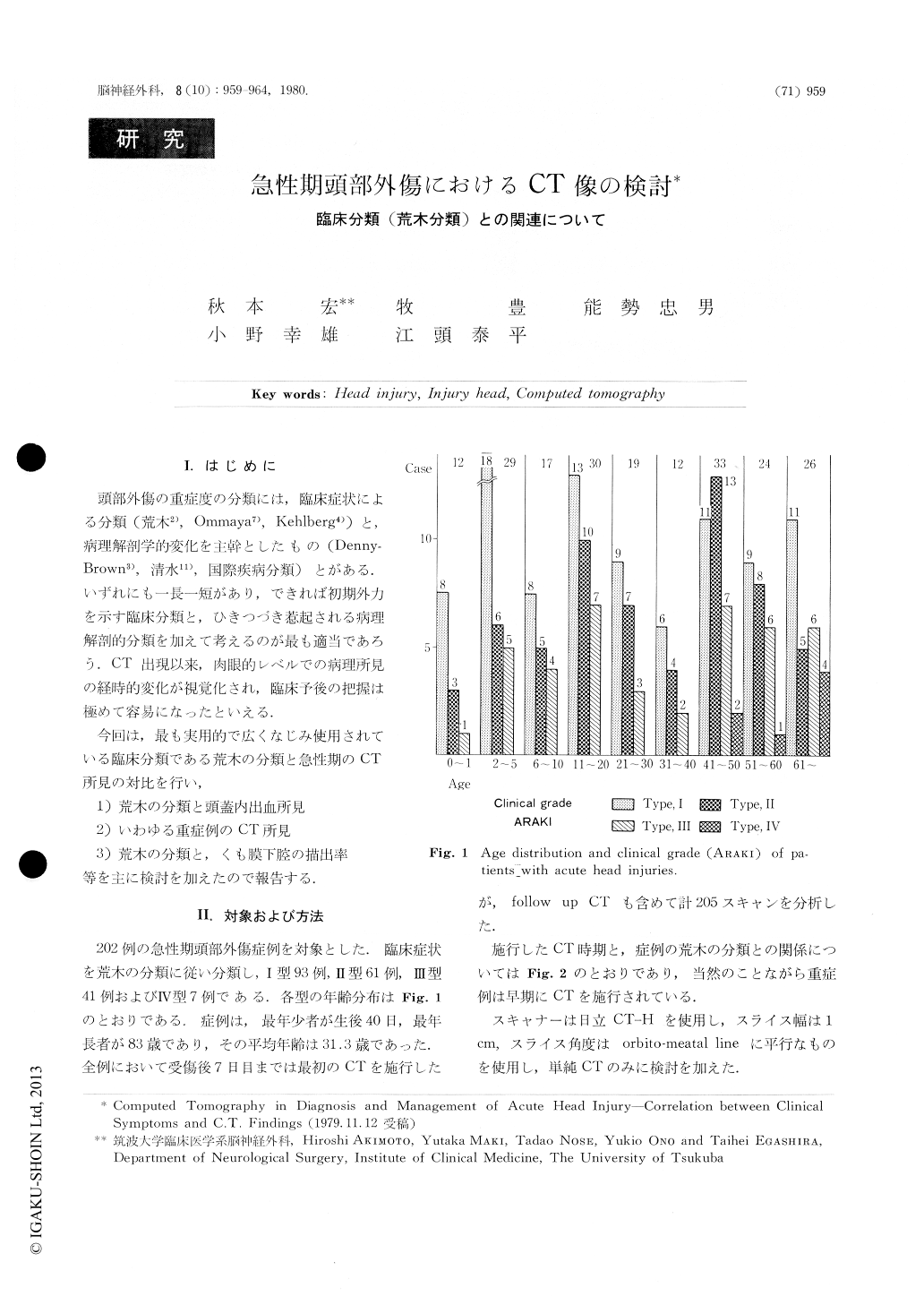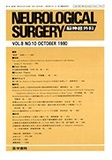Japanese
English
- 有料閲覧
- Abstract 文献概要
- 1ページ目 Look Inside
I.はじめに
頭部外傷の重症度の分類には,臨床症状による分類(荒木2),Ommaya7),Kehlberg4))と,病理解剖学的変化を主幹としたもの(Denny Brown3),清水11),国際疾病分類)とがある.いずれにも一長一短があり,できれば初期外力を示す臨床分類と,ひきつづき惹起される病理解剖的分類を加えて考えるのが最も適当であろう.CT出現以来,肉眼的レベルでの病理所見の経時的変化が視覚化され,臨床予後の把握は極めて容易になったといえる.
今回は,最も実用的で広くなじみ使用されている臨床分類である荒木の分類と急性期のCT所見の対比を行い.
A series of 202 patients with acute head injuries was investigated in correlation with clinical signs and computed tomographical findings. Clinical signs were classified into four types according to ARAKI's grading. Ninety three cases of type I , 61 cases of type II, 41 cases of type III and 7 cases of type IV were included in this seires. The youngest patient was 40 days old and the oldest was 83 years old and average age was 31.3 years old. Initial C.T. was carried out in 70.8% of this series within 2 days after injury.

Copyright © 1980, Igaku-Shoin Ltd. All rights reserved.


